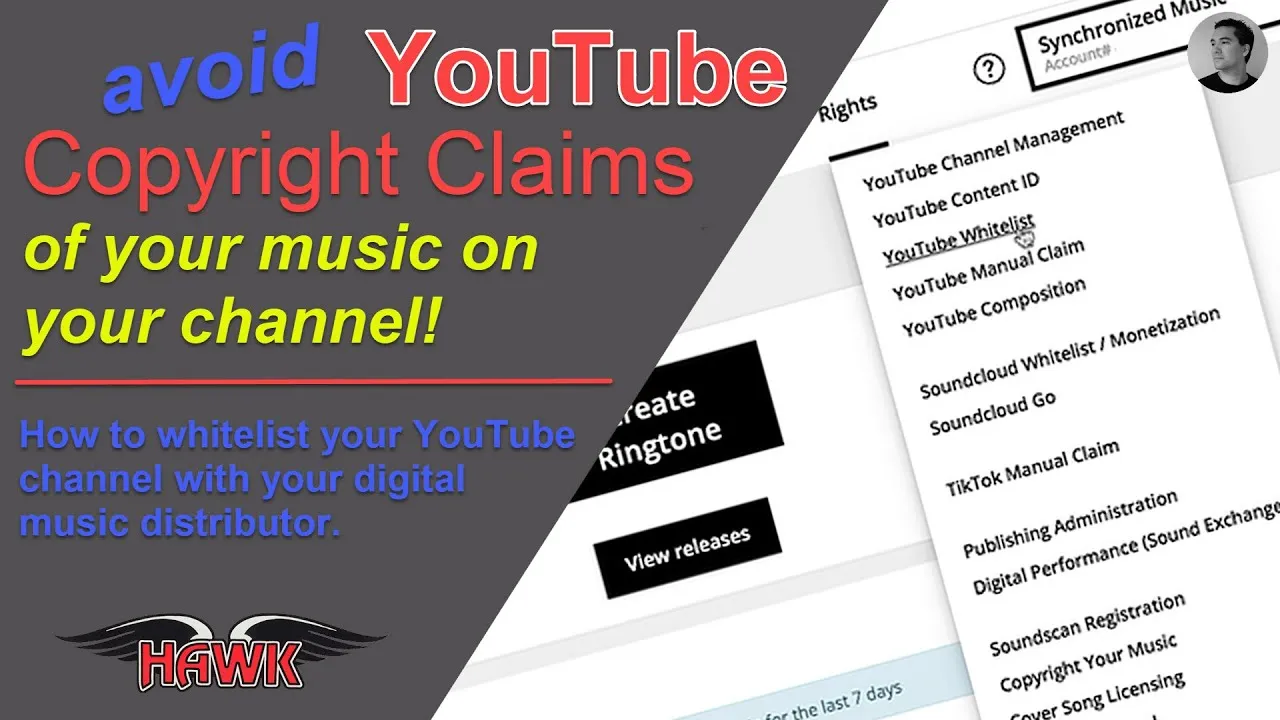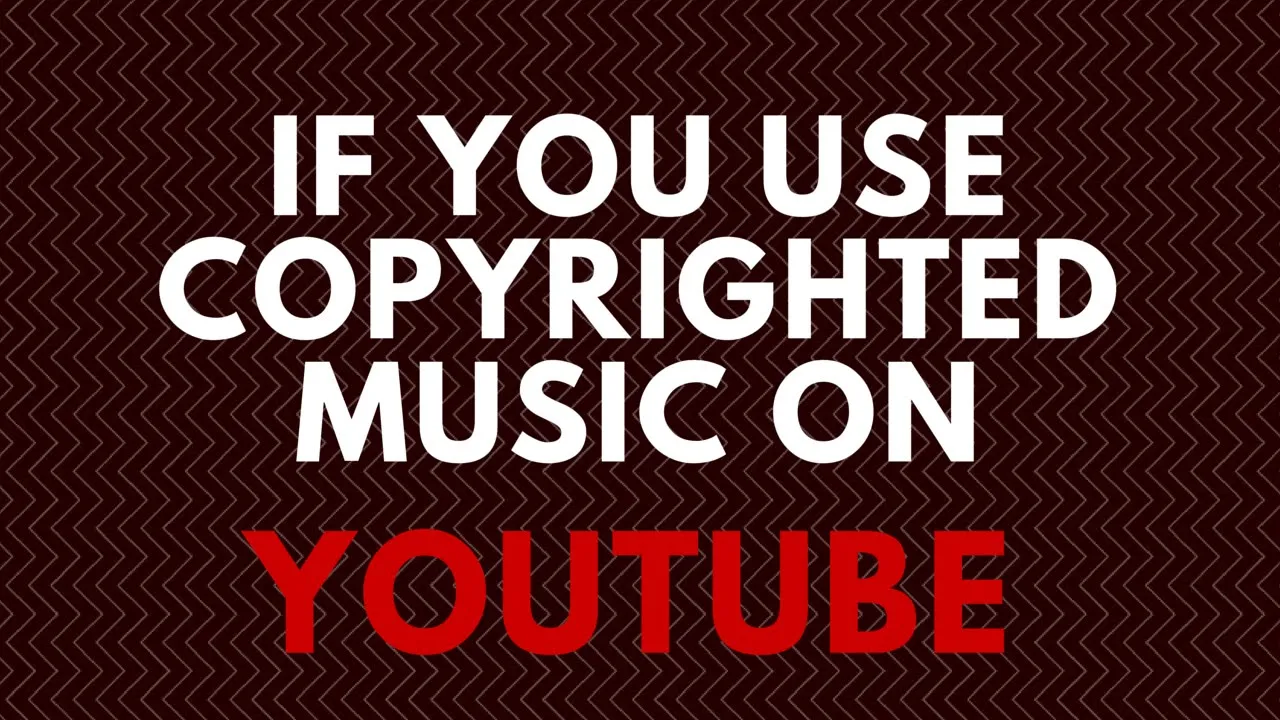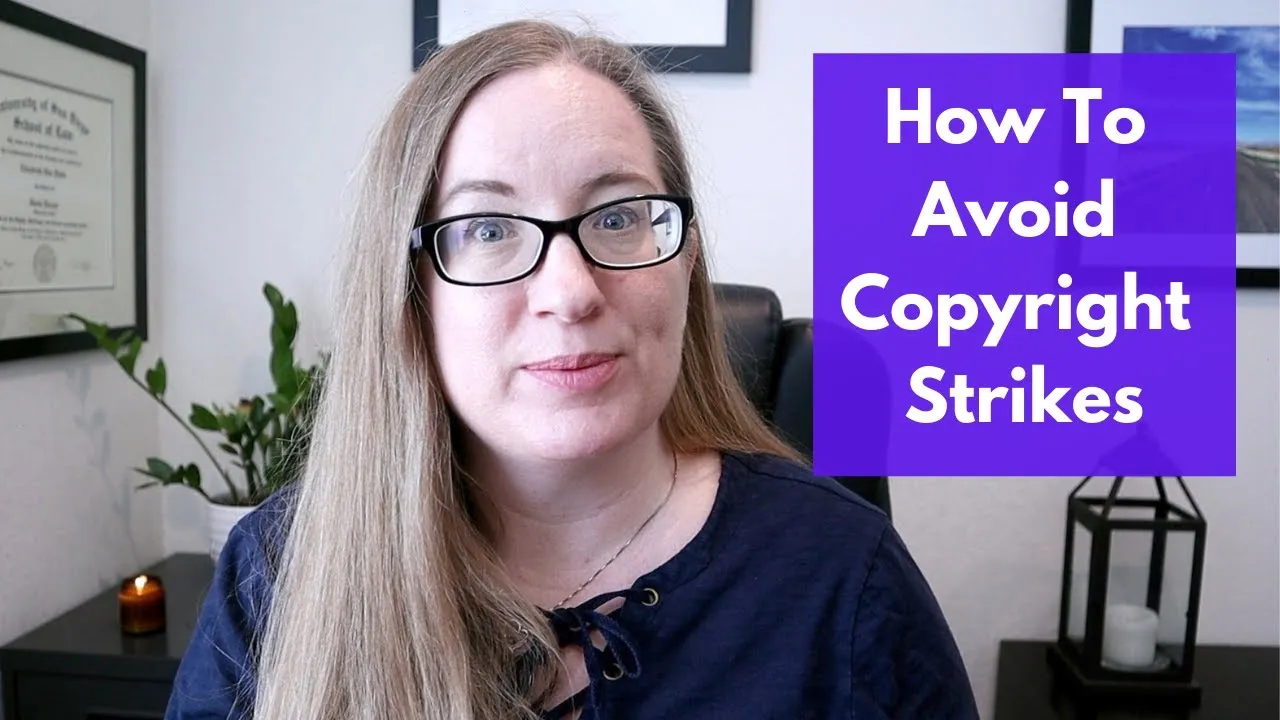When it comes to creating content on YouTube, one of the biggest pitfalls creators face is copyright infringement, especially regarding music. Using the wrong tracks can lead to your videos being taken down, demonetized, or worse, your channel being banned. In this blog post, we’ll break down the essential aspects of copyright and fair use, helping you navigate the often murky waters of music usage on YouTube.
Understanding Copyright and Fair Use

Copyright is a legal protection granted to the creators of original works, including music, literature, and art. When you use copyrighted music without permission, you risk violating the owner's rights, which can have serious consequences. So, what does this mean for YouTube creators?
Let’s break it down:
- Copyright Basics: Copyright gives the creator exclusive rights to reproduce, distribute, and perform their work. This means that if you want to use a song, you typically need to get permission from the copyright holder.
- Public Domain: Works that are in the public domain are free for anyone to use without permission. This usually includes music whose copyright has expired or works created by the government.
- Creative Commons: Some artists release their music under Creative Commons licenses, which allow you to use their work under certain conditions. Be sure to read the specific license to understand what's allowed.
- Fair Use: This is a bit tricky! Fair use allows limited use of copyrighted material without permission for purposes like criticism, comment, news reporting, teaching, scholarship, or research. However, it’s not a blanket protection, and the definition can vary depending on specific circumstances.
To determine whether your use qualifies as fair use, consider the following factors:
| Factor | Explanation |
|---|---|
| Purpose and Character of Use | Are you using the music for commercial purposes or educational purposes? Transformative uses that add new meaning or message are more likely to be protected. |
| Nature of the Copyrighted Work | Using creative works (like music) is less likely to be fair use compared to using factual works. |
| Amount and Substantiality | Using a small excerpt may be more acceptable than using the entire song. However, even a small part can be problematic if it’s considered the “heart” of the work. |
| Effect on Market Value | If your use harms the market for the original work, it’s less likely to be considered fair use. |
Understanding these concepts is crucial for any YouTube creator looking to avoid copyright issues while using music. Always err on the side of caution and consider seeking legal advice if you’re unsure!
Also Read This: Tips for Accessing Shutterstock for Free
3. Types of Music Licensing

When it comes to using music on YouTube, understanding the different types of music licensing is crucial to avoid copyright issues. Let’s break it down into the major categories you should be aware of:
- Copyrighted Music: This is music that is protected under copyright law. Unless you have permission from the copyright owner, using this type of music in your videos can lead to strikes on your channel or even legal action.
- Royalty-Free Music: This type of music allows creators to use the tracks without having to pay royalties for each use. However, it's essential to check the specific licensing terms, as some may require a one-time fee or attribution.
- Creative Commons Music: Creative Commons licenses allow artists to share their work with certain permissions. Some licenses permit commercial use, while others may require attribution or restrict modifications. Always read the license details carefully.
- Public Domain Music: Music in the public domain is free to use without permission or payment. This typically includes works whose copyrights have expired or those created by the government.
Choosing the right type of music license can make or break your YouTube channel. So, ensure you do your homework before hitting that upload button!
Also Read This: Understanding Why Your YouTube Commercials Are in French
4. Using Royalty-Free and Creative Commons Music

Now that we’ve covered music licensing types, let’s dive deeper into two popular options: royalty-free music and Creative Commons music. Both can be fantastic resources for YouTube creators looking to avoid copyright issues.
Royalty-Free Music is a fantastic option for creators who want high-quality tracks without the hassle of ongoing fees. Here’s what you need to know:
- Typically, you pay a one-time fee to use the music.
- You can use the music in multiple projects without additional costs.
- Some platforms offer free royalty-free music, but always verify the terms.
On the other hand, Creative Commons Music offers a unique approach to music sharing:
- Many artists distribute their music under various Creative Commons licenses, allowing you to use their work freely under certain conditions.
- Some licenses require you to credit the artist, while others may restrict commercial use.
- Always check the specific license associated with the track before using it.
Both royalty-free and Creative Commons music can enhance your videos while keeping your content safe from copyright claims. Happy creating!
Also Read This: How to Set Up Digital Images for Sale on ShootProof
How to Properly Attribute Music
When it comes to using music in your YouTube videos, proper attribution is crucial. This not only shows respect for the creators but also helps you steer clear of copyright issues. So, how do you go about it? Let's break it down.
First and foremost, you need to understand the specific requirements of the music you're using. Here are some general steps for proper attribution:
- Check the License: Before using any music, make sure to check its licensing terms. Many tracks are available under Creative Commons licenses, which usually require attribution.
- Include Attribution in Your Description: Place the attribution in your video description. This should include the title of the song, the artist's name, and a link to where the music can be found.
- Use a Visual Cue: If possible, mention the artist during your video or display a text overlay that shows the attribution. This reinforces the acknowledgment of the creator.
- Follow Specific Format: While there’s no universal format, a common structure often looks like this: “Song Title” by Artist Name is licensed under [License Type]. Find it at [Link].
By following these steps, you’re not only protecting yourself from copyright claims but also promoting the artists whose work you appreciate. Remember, giving credit where it’s due can go a long way in building a positive online community!
Also Read This: How Much XP Does Team Rumble Give in Fortnite
Common Copyright Mistakes to Avoid
Navigating copyright laws can feel like walking through a minefield, especially on platforms like YouTube. To help you out, here are some common mistakes creators make that can lead to copyright issues:
- Ignoring License Details: Always read the fine print! Many creators overlook the specific licensing terms attached to a track and end up using music in ways that aren’t allowed.
- Using Popular Songs Without Permission: Just because a song is popular doesn’t mean it’s free to use. Many well-known tracks are heavily protected by copyright, and using them without permission can lead to your video being taken down.
- Failing to Give Credit: If you’re using music that requires attribution, not giving credit can lead to copyright strikes. Always ensure you’re acknowledging the creator properly.
- Assuming Fair Use Applies: Fair use can be a tricky concept. Just because you’re using a song in a transformative way doesn’t automatically mean you’re in the clear. It’s best to err on the side of caution.
- Not Keeping Records: If you’ve obtained permission for a particular piece of music, keep a record of that communication. It can serve as protection if copyright issues arise later.
Avoiding these common pitfalls can save you a lot of headaches down the line. So, take the time to understand copyright and make informed decisions about the music you use in your videos!
Also Read This: How to Cancel Adobe Stock Free Trial Without Additional Charges
7. Tools and Resources for Music Licensing
When it comes to using music in your YouTube videos, understanding music licensing is crucial to staying on the right side of copyright laws. Fortunately, there are several tools and resources available that can help you navigate this complex landscape seamlessly. Here’s a breakdown of some of the most useful options:
- Music Libraries: Websites like Artlist, Epidemic Sound, and Soundstripe offer extensive libraries of pre-licensed music. You pay a subscription fee, and you can use their tracks without worrying about copyright claims.
- Creative Commons: Platforms like Free Music Archive provide music under Creative Commons licenses. Just be sure to check the specific license type, as some require attribution or have restrictions on commercial use.
- Royalty-Free Music Sites: Websites such as Bensound and Purple Planet offer royalty-free tracks that you can use in your videos, often for free or for a small fee.
Using these resources not only helps you find the perfect soundtrack for your content but also keeps you compliant with copyright laws, allowing you to focus on what you do best: creating amazing videos!
Also Read This: How to Save Your Behance Project as a PDF and Download Your Work for Offline Use
8. Steps to Take if You Receive a Copyright Claim
Receiving a copyright claim on your YouTube video can be alarming, especially if you believe you’re using music fairly. But don’t panic! Here are some steps you can take to address the situation:
- Review the Claim: Start by checking the details of the copyright claim. YouTube typically sends you an email or a notification outlining which part of your video is in question. Make sure to read it carefully!
- Understand Your Rights: Familiarize yourself with the copyright laws and fair use policies. Sometimes, your use of the music might qualify as fair use, depending on factors like purpose and amount used.
- Consider Disputing: If you genuinely believe you have the right to use the music, you can dispute the claim. You’ll need to provide a compelling explanation and any licenses you may have obtained.
- Remove the Music: If the claim is valid and you don’t have the necessary rights, it’s best to remove the infringing music from your video to avoid further complications.
- Seek Legal Advice: If the situation escalates, consider consulting with a legal expert in copyright law to explore your options.
Remember, copyright claims are common on platforms like YouTube. Handling them promptly and professionally can help you maintain your channel’s integrity and creativity!
Avoiding Copyright Issues on YouTube When Using Music
When creating content for YouTube, using music can significantly enhance the viewer's experience. However, copyright issues can arise if you use music without proper authorization. Here are some essential tips to help you avoid copyright problems when using music in your YouTube videos:
- Use Royalty-Free Music: Look for music that is labeled as royalty-free. This type of music can be used without paying royalties each time it's played.
- Creative Commons Licenses: Some artists release their music under Creative Commons licenses, allowing you to use their work under specific conditions. Always check the license type.
- YouTube Audio Library: YouTube offers a free audio library filled with music and sound effects that can be used in your videos without copyright concerns.
- Obtain Permission: If you wish to use a specific song, consider reaching out to the artist or copyright holder to obtain permission.
- Use Music from Paid Services: Services like Epidemic Sound, Artlist, or AudioJungle provide licensed music for a fee, ensuring you avoid copyright issues.
Below is a comparison between different music sources:
| Music Source | Cost | License Type |
|---|---|---|
| Royalty-Free Music | Varies | Royalty-Free |
| Creative Commons | Free | Depends on License |
| YouTube Audio Library | Free | YouTube License |
| Paid Music Services | Subscription Fee | Commercial License |
By following these guidelines and being mindful of copyright laws, you can enjoy using music in your YouTube videos without the fear of facing copyright strikes or legal repercussions.